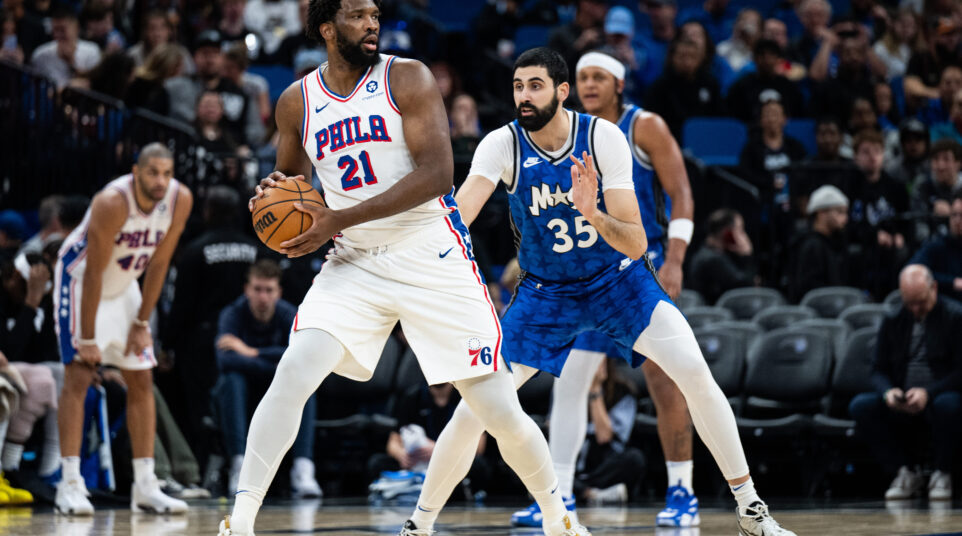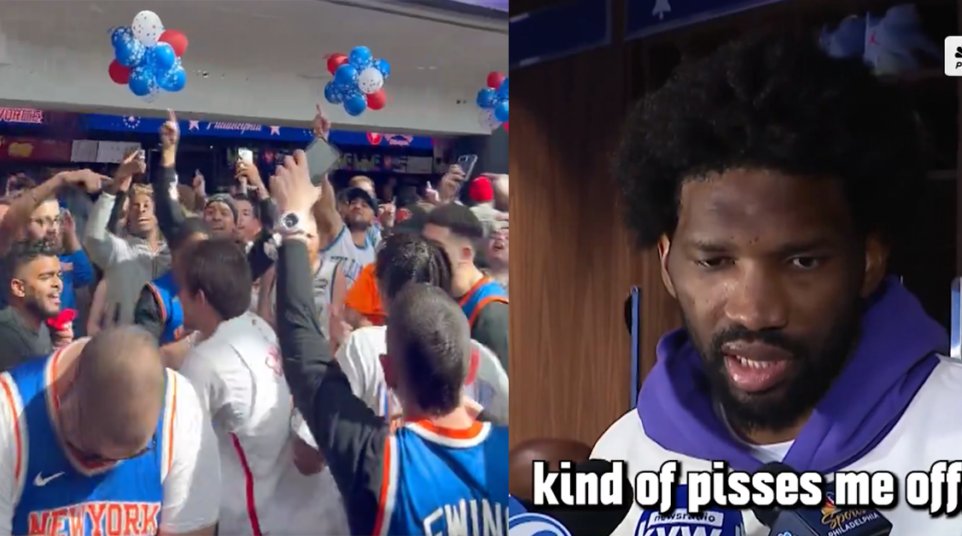
The NBA Using "Division Leader" in a Three-Way Tiebreaker is Very Dumb
Honest question – can you name each division in the NBA?
I don’t think the average sports fan can do it. Regardless, divisions are the reason why the Sixers are the 7 seed, despite finishing in a three-way tie with the Magic and Pacers at 47-35 this season. They ripped off eight straight wins to close the year, but the NBA solves a three-way tiebreaker by giving the nod to “division leader,” and since Orlando won the Southeast, they got the 5 seed. They are then removed from the tiebreaker and it comes down the head-to-head between the Pacers and Sixers, and since Indy won the season series, they get the 6 seed and the Sixers get the 7.
It’s not a huge deal because the Sixers’ draw is a very good one. If they beat the Miami Heat at home, they get the Knicks in the first round in the 2/7 series and wouldn’t have to play Boston until the Eastern Conference Finals, if by an act of God they make it that far.
The thing about using division leader to break ties is that the Orlando Magic were the worst division winner in the NBA. They finished 47-35, which is the poorest record among the Celtics (64-18), Bucks (49-33), Thunder (57-25), Clippers (51-31), and Mavericks (50-32). Not only that, but there are six teams in the NBA, the Pelicans, Suns, Knicks, Nuggets, T Wolves, and Cavs, who all have better records than Orlando but did not win their division. The Magic benefitted from the utter mediocrity of the Heat and Hawks, and the fecklessness of the Hornets and Wizards.
What’s equally dumb is that you don’t necessarily play the other teams in your division any more or any less than non-division teams. The Magic and the Sixers both played the Hornets, Wizards, Hawks, and Heat four times each. But Orlando only played Boston three times while the Sixers played the Celtics four times. On top of that, the Sixers and Magic only played each other three times, so there’s no consistency across the board. The other funny thing is that the Magic didn’t even have some amazing record against their division “rivals.” They finished 9-7 against the rest of the Southeast, while Miami was 13-3, so if you’re looking at those five teams strictly in a vacuum, the Heat had the best overall record.
So what’s a better way to do it? I think you look at #2 here, or go straight to #4, #5, or #6 on the guidelines:
Tiebreaker Basis – Three or More Teams Tied
(1) Division leader wins tie from team not leading a division (this criterion is applied regardless of whether the tied teams are in the same division)
(2) Better winning percentage in all games among the tied teams
(3) Division won-lost percentage (only if all teams are in same division)
(4) Conference won-lost percentage
(5) Better winning percentage against teams eligible for the playoffs in own conference (including teams that finished the regular season tied for a playoff position)
(6) Better net result of total points scored less total points allowed against all opponents (“point differential”)
Conference win/loss is a better indicator because the playoff seeding doesn’t involve teams from the other conference. Winning percentage against playoff teams is also better, because you’re eliminating the dreck from the equation. Point differential is always better because it’s simple – who scored the most points and allowed the fewest?
More than anything, the problem here is that NBA divisions don’t mean anything. There’s no actual significance. They only matter in a case like the one that bit the Sixers this weekend, when a tiebreaker comes into play. And sure, the Sixers could have avoided this by simply winning more games, and maybe that stupid Clippers home game would have made the difference, but they lost the reigning MVP for two full months and did enough down the stretch to avoid the play-in round. They just got burned by the way the rules are currently laid out. They’ll simply have to take care of business home against Miami then it’s on to Madison Square Garden to play Villanova in the first round.





